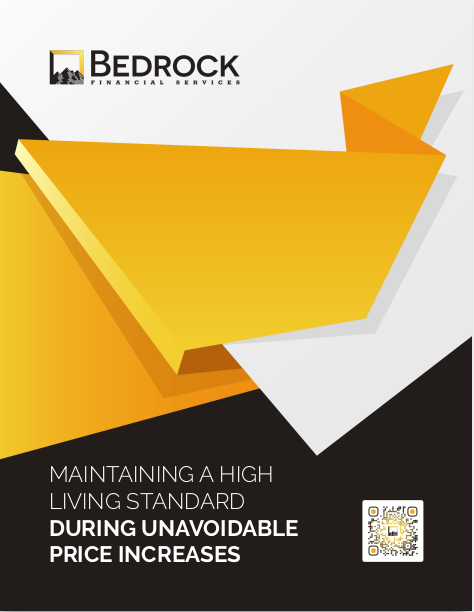Key Takeaways
-
Failing to use a CRM in 2025 is costing you time and leads. Manual processes are inefficient and limit your ability to scale.
-
Implementing a CRM system empowers you to automate client communication, track sales activities, and streamline follow-ups—all critical for increasing your close rate.
Why Time Management Is Everything in Sales
As a financial professional, your most limited resource isn’t money, it’s time. Between prospecting, scheduling, preparing proposals, following up, and managing compliance, hours slip away quickly. If you’re managing these tasks manually or relying on spreadsheets, you’re spending far too much time on low-value activities.
You might think you’re staying organized, but the cracks are showing in missed follow-ups, delayed responses, and inconsistent communication. These issues aren’t just annoying—they directly impact your revenue.
The Hidden Time Sink You May Be Ignoring
Without a CRM, many advisors spend:
-
1–2 hours daily sorting through emails to find past client interactions
-
30–60 minutes a day manually updating notes or preparing reminders
-
Several hours per week trying to remember who to follow up with
That’s up to 10 hours a week lost. Over a year, you’re looking at more than 500 hours spent on tasks a CRM could automate or handle for you. That’s time that could be invested in revenue-generating activities like discovery meetings or policy reviews.
Why CRMs Are Built for Financial Professionals
Customer Relationship Management (CRM) systems aren’t generic tools. In 2025, CRM platforms are built specifically for advisors like you, offering capabilities that align with your workflow:
-
Automated reminders for annual reviews, policy updates, or birthdays
-
Integrated email tracking so you know when prospects read your messages
-
Custom pipelines for TSP rollover prospects, retirement planning clients, or insurance follow-ups
-
Client segmentation so you can tailor outreach by age, income, or federal employment status
These features are no longer optional. They’re the core tools that separate high-performing advisors from the rest.
The Cost of Missed Opportunities
Let’s say you miss just one follow-up a week due to disorganization. That’s 52 opportunities a year. Even if only a third of those prospects converted, that could mean dozens of clients you never closed. Multiply that by the average annual revenue per client, and you’re looking at a significant dent in your bottom line.
Manual tracking can’t scale. As your client base grows, human memory becomes unreliable. Without a system to manage ongoing engagement, you lose the ability to maintain consistent communication—and consistency is what builds trust and drives conversions.
Why Email Alone Isn’t Enough
Email is still a powerful tool, but without integration into a CRM, it’s disconnected from the bigger picture. Here’s what you miss without that connection:
-
No centralized history of client conversations
-
No way to see which emails get opened or ignored
-
No trigger-based workflows to initiate tasks or schedule follow-ups
A CRM gives you visibility across all channels. It connects your email, phone, calendar, and tasks so you see the full lifecycle of a client from first contact to policy issuance.
Automation Isn’t Just for Big Firms
You don’t need a large team to benefit from automation. Even solo advisors can use CRMs to replicate the work of a full-time assistant. Automated workflows can:
-
Send personalized onboarding emails to new clients
-
Schedule quarterly review reminders
-
Follow up automatically when a lead clicks a link
These actions help maintain contact without requiring your constant attention. In today’s competitive market, that consistency is key to staying top-of-mind.
Why You Can’t Afford Not to Use a CRM in 2025
In 2025, the financial landscape is more competitive than ever. Clients expect prompt replies, proactive advice, and seamless communication. Without a CRM, you simply can’t keep up.
Consider how your competition is operating:
-
They have automated lead follow-ups triggered within minutes
-
They receive notifications when a prospect revisits their website
-
They’re running targeted campaigns to segmented lists
If you’re still operating off a legal pad and Outlook calendar, you’re not just behind—you’re invisible.
Streamlining the Client Journey
From prospecting to policy delivery, a CRM creates a frictionless experience for both you and your clients. Here’s how it impacts each stage:
1. Prospecting: Automatically capture and score leads from web forms or ad campaigns.
2. Initial contact: Schedule meetings through an integrated calendar that syncs with your availability.
3. Discovery: Track every note, question, and document exchanged.
4. Proposal: Generate templated documents pre-filled with client data.
5. Onboarding: Trigger email sequences to guide clients through the next steps.
6. Long-term service: Automate annual reviews and check-ins to maintain retention.
Every step becomes smoother and more consistent. That’s not just efficient—it’s professional.
Real-Time Metrics That Actually Matter
One of the biggest benefits of a CRM is access to performance metrics. Instead of guessing where your business is strong or weak, you get data-driven insights such as:
-
Lead-to-client conversion rate
-
Average time from contact to close
-
Revenue generated by campaign
-
Follow-up rates per advisor
With this data, you can refine your sales strategy, improve scripts, and allocate your time where it truly counts.
Stop Relying on Memory and Start Building Systems
Your memory shouldn’t be the backbone of your business. Systems are. A well-designed CRM doesn’t just store data; it creates order, accountability, and predictability. These are the traits of a sustainable business model.
The best part? Once your CRM is properly set up, it works quietly in the background—tracking, prompting, and organizing—so you can focus on what you do best: providing value to your clients.
How to Start Without Feeling Overwhelmed
You don’t need to overhaul your business in a day. Start with small steps:
-
Import your existing contacts
-
Set up a basic follow-up pipeline
-
Add tags for segmentation (e.g., pre-retirees, FEGLI review, TSP rollover)
-
Create one or two automated email sequences
In a few weeks, you’ll see how much more smoothly your days run. And once you experience that efficiency, you’ll never go back to your old system.
Your Clients Will Feel the Difference Too
It’s not just your business that benefits from CRM implementation. Your clients feel it too:
-
Faster responses
-
Fewer missed steps
-
Personalized engagement
-
Clearer communication during onboarding
In a relationship-driven profession, these touches build loyalty and turn clients into long-term advocates.
Make Time Work for You, Not Against You
Time spent managing clutter is time lost forever. In 2025, you need to be ruthless about where your hours go. A CRM gives you back control over your calendar, communication, and client relationships.
It’s not about adding more tools—it’s about removing friction.
Start Running a Smarter Practice Today
If you’re still running your business without a CRM, you’re not just leaving money on the table—you’re also limiting your potential.
At Bedrock Financial Services, we help advisors like you implement the systems, automation, and workflows needed to scale faster and serve better. Our tools are built with your success in mind, whether you’re just getting started or managing hundreds of clients.
Join us today and see how we can help you eliminate busywork, grow your revenue, and gain back your time.







